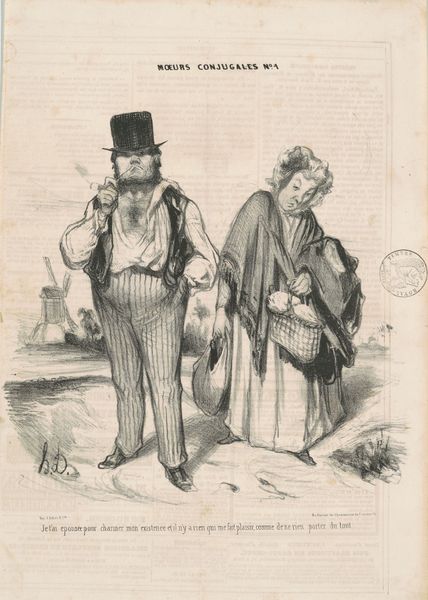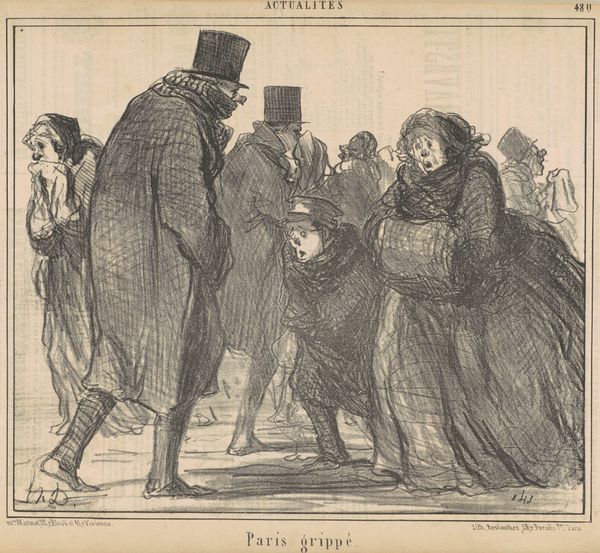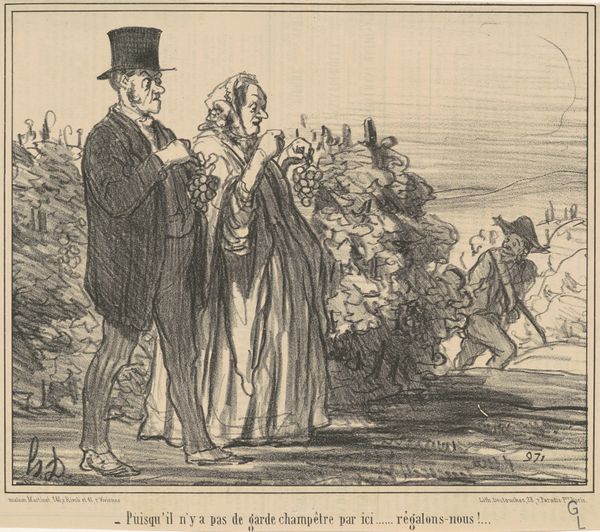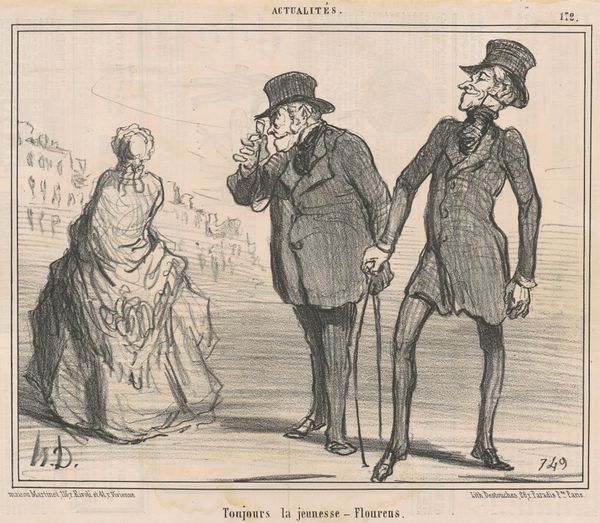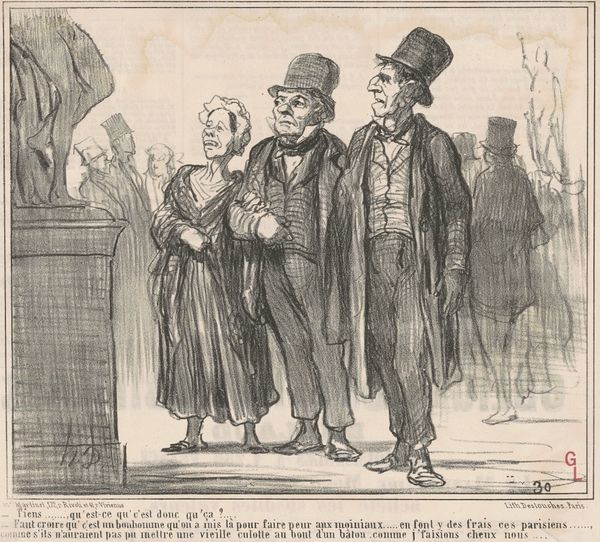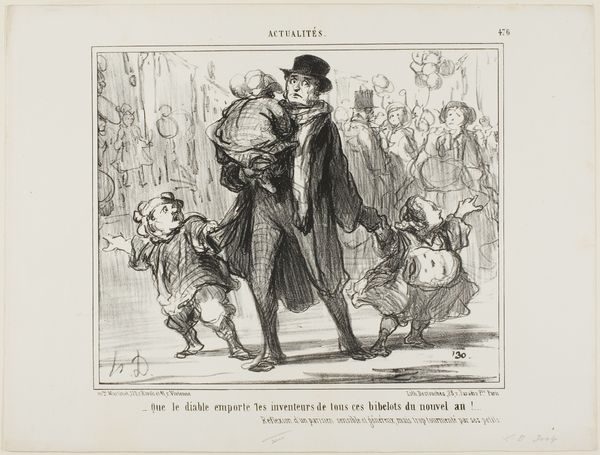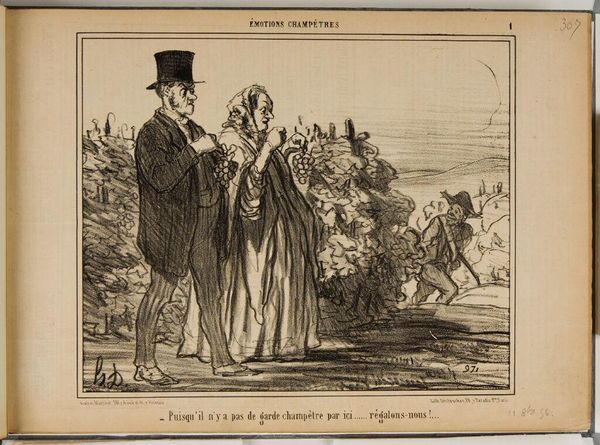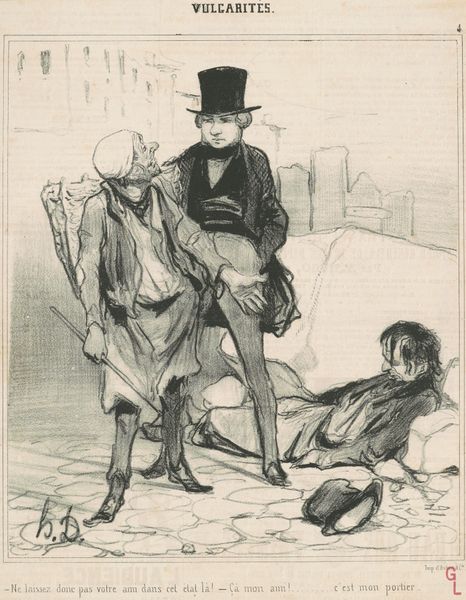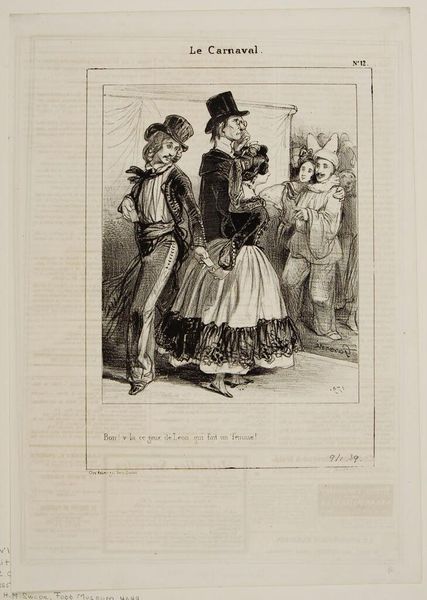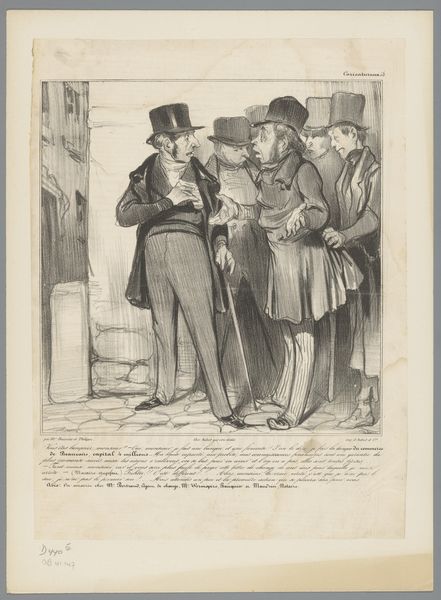
drawing, lithograph, print
#
drawing
#
lithograph
# print
#
caricature
#
romanticism
Copyright: National Gallery of Art: CC0 1.0
Editor: Here we have "Ayant abusé du raisin de 1857" a lithograph by Honoré Daumier, dating to around the 19th century. It depicts three figures, one of whom looks quite unwell! I’m curious about the scene as a whole—what stands out to you in this print? Curator: Well, Daumier's caricatures were rarely just funny drawings; they often held pointed social and political commentary. The title itself, "Having Abused the Grapes of 1857," suggests more than just overindulgence. Consider the historical context. What was happening in France, and more broadly, Europe around 1857? Editor: If I recall correctly, there was a major economic downturn happening around that time. Curator: Precisely. So, could this print be interpreted as a commentary on the economic excesses or perhaps the perceived failures of the elite, symbolized by someone who’s "abused" the bounty of the vintage? What does the child's discomfort signify? Is this image promoting awareness of a political situation? Editor: I hadn't thought of it that way, but it makes sense. Maybe the child is representative of the wider public. The man's evident illness becomes a metaphor for societal ill-health. Curator: Daumier uses visual cues to engage with these historical themes. Look at the figures themselves – are they presented sympathetically? What’s the public role of these exaggerated figures, presented this way? Editor: No, not really. Their expressions and postures seem to highlight a critique, a critical political viewpoint of excess perhaps? Thanks, seeing it through that lens, the piece becomes much richer. Curator: Indeed. Daumier's art acted as a form of visual journalism. I think this piece encourages us to reflect on how socio-political climates find their way into our artistic creations.
Comments
No comments
Be the first to comment and join the conversation on the ultimate creative platform.
